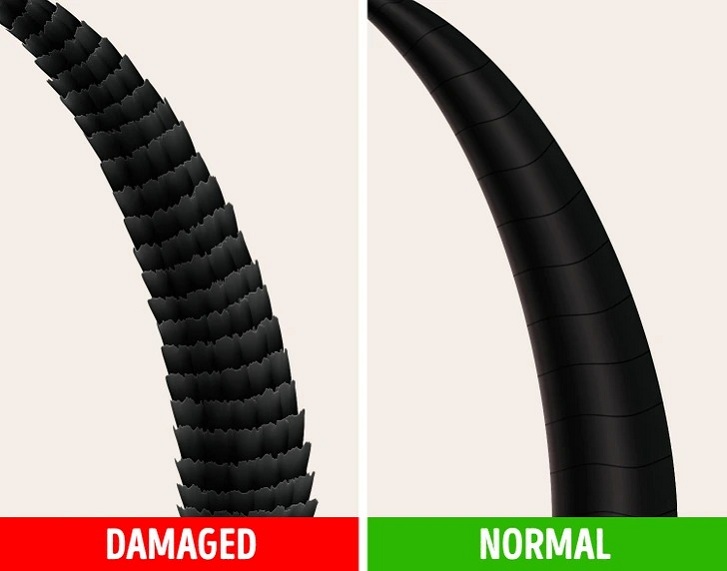Our hair is incredibly resilient, capable of withstanding a strain of 3.5 ounces and stretching up to 30% longer when wet. However, these superpowers are only present in healthy hair, as damaged strands are prone to breakage. It may not be immediately apparent whether your hair is in good condition or not, but there are simple ways to assess its health and take action to improve it.
Here at Lifeknowhow, we are always here to provide useful tips. This time, we have discovered exactly what you need to do to maintain healthier hair.
1. Follicle Test

To determine the overall health of your hair and assess whether hair loss is a concern, it is important to examine your roots. Follow these steps:
- Pluck a strand of hair, ensuring that you grip it as close to your head as possible to keep the root intact.
- Examine the follicle. A healthy strand should have a bulb-shaped root end. If the root is small or lacks any bulb shape, your hair is weak and requires care.
How to prevent hair loss:
Follow the Mediterranean diet, as studies have shown that it reduces the risk of hair loss. This diet includes foods such as vegetables, fruits, nuts, fish, and whole grains. Avoid red meat, sweet beverages, and processed foods. The Mediterranean diet not only promotes healthy hair but also offers numerous other benefits, such as supporting blood sugar levels, protecting brain function, and maintaining a healthy heart.
Avoid tight hairstyles, especially ponytails, especially while sleeping, as they can contribute to hair loss.
Take specific vitamins and minerals that promote hair health.
2. Sink Test

This test measures the porosity of your hair. Healthy hair is relatively solid, while damaged hair absorbs liquid quickly. Before conducting this test, shampoo your hair to ensure it is clean and obtain accurate results. Follow these steps:
- Pluck a strand of clean hair.
- Drop the strand into a glass of water. Healthy strands will float, relatively healthy ones will sink slightly, and damaged ones will sink completely.
How to treat hair with high porosity:
- Apply various hair butters and oils to seal in moisture. These products are beneficial for dull, dry, and damaged hair, making it soft, healthy, frizz-free, and beautifully elegant.
- Use hair conditioner after each wash.
- Apply apple cider vinegar and aloe vera to your hair to balance the pH levels.
3. Tug Test

This test assesses the elasticity of your hair. Follow these simple steps:
The test measures the severity of hair loss. If you are visiting a doctor and having the test done professionally, they will pluck small areas of hair (around 40 strands) from different parts of your head. If 6 or more hairs fall out, it indicates active hair loss. The test will determine whether you have signs of fragile hair loss.
- Carefully pull out a strand of hair.
- Gently pull the strand at both ends. If it stretches and bounces back when released, it is healthy. If it breaks easily, it is weak.
How to restore hair elasticity:
- Air-dry your hair, as heat can damage its elasticity.
- Massage your hair with jojoba oil, which acts as a moisturizer. You can also add it to your hair conditioner to prevent dryness, breakage, and split ends. Jojoba oil contains essential vitamins and minerals, such as Vitamin C and B, which nourish the hair and promote thickness. It can also prevent hair loss.
- Apply honey to your strands. Honey is a natural conditioner that helps retain moisture in the hair. It can promote hair growth and provide a natural shine. Honey also contains protein, which protects the hair from breakage.
4. Porosity Test

This test helps determine the condition of your hair cuticle to assess whether it is damaged or not. Follow these steps:
- Hold a hair strand between your index and middle fingers.
- Slide the strand through your fingers, from top to root. If it feels rough and uneven, your hair is damaged. If it feels smooth, it is healthy.
How to treat damaged hair:
- Try a keratin treatment to make your hair smoother, eliminate frizz, and enhance shine.
- Limit dyeing, curling, and blow-drying your hair.
- Consider a rice water rinse, as research suggests it can protect the hair from damage and maintain its color for longer periods.
What are your tips for hair care?
Preview photo credit Depositphotos.com.

